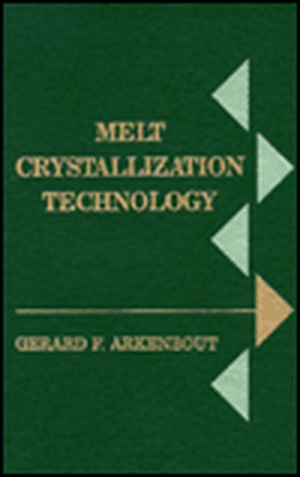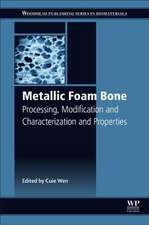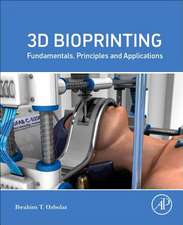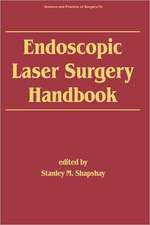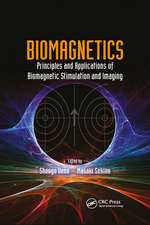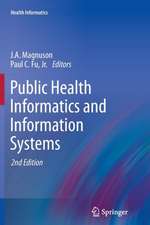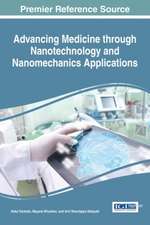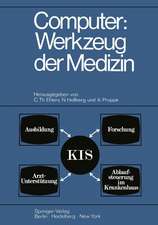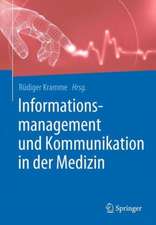Melt Crystallization Technology
Autor Gerard F. Arkenbout, Arkenbout, Arkenbout-De Vroome Arkenbout-De Vroomeen Limba Engleză Hardback – 30 apr 1995
There is a growing demand for ultrapure organic compounds such as fine chemicals, pharmaceuticals, and basic materials for use in the polymer industry. . . . In quite a number of cases, it is difficult or impossible to manufacture ultrapure organics efficiently using conventional separation techniques such as distillation. Moreover, conventional techniques usually require large amounts of energy.
To improve the purification efficiency of organics, special techniques based on crystallization from the melt have been developed. Melt crystallization meets industry's need for a highly selective separation process for organic compounds which operates at low enough temperatures to prevent thermal degradation. Melt crystallization processes have the added advantage that they are energy-efficient and ecologically sound.
Melt crystallization techniques appear to be particularly promising for upgrading organic materials and are one of the few routes that appear to be feasible for purifying starter materials for high-tech polymers. The aim of this book is to provide basic information on melt crystallization technology. . . . This monograph consists of three parts: 1. basic principles, 2. process options, and 3. technical equipment and applicability.
This new book is the first unified guide and reference to an important chemical process technology. It is comprehensive and organized for easy reference. More than 150 diagrammatic representations, flow charts and photographs illustrate equipment and processes. More than 40 tables provide useful reference data.
The Author
Dr. Arkenbout studied chemistry at the University of Utrecht, and joined TNO, the Netherlands Organization for Applied Scientific Research. He has specialized in research on new separation processes and has had thirty of his articles on this subject published. He recently retired from the position of manager of physical separation research, but has remained active in this field through affiliations with the Laboratory of Solid State Chemistry at the University of Nijmegen, the Laboratory for Process Equipment, Delft University of Technology, and TNO.
Preț: 2245.10 lei
Preț vechi: 2363.27 lei
-5% Nou
Puncte Express: 3368
Preț estimativ în valută:
429.58€ • 448.57$ • 354.75£
429.58€ • 448.57$ • 354.75£
Carte tipărită la comandă
Livrare economică 15-29 aprilie
Preluare comenzi: 021 569.72.76
Specificații
ISBN-13: 9781566761819
ISBN-10: 1566761816
Pagini: 383
Dimensiuni: 152 x 241 x 34 mm
Greutate: 0.79 kg
Ediția:1
Editura: CRC Press
ISBN-10: 1566761816
Pagini: 383
Dimensiuni: 152 x 241 x 34 mm
Greutate: 0.79 kg
Ediția:1
Editura: CRC Press
Cuprins
Preface, Notation
I. Basic Principles
1.Prospects of Melt Crystallization
General Introduction The Method of Melt Crystallization Energy Efficiency, Environmental Impact Process Options Some Alternative Techniques
2.Basic Principles in Crystallization
Introduction Crystal Structure, Morphology Crystal Growth, Mechanisms
3.Thermodynamic Limits
Solid-Liquid Equilibria Product Purity Recovery Prediction of Eutectic Compositions Prediction of Miscibility in the Solid Phase Methods to Improve Recovery Conclusions
4.Kinetic Limits
Incorporation of Impurities into Crystals Effective and Integral Distribution Coefficient Purification Efficiency in Dependence on Process Conditions Purity Attainable by One Single Crystallization Operation
5.Further Purification
Scope of Techniques Washing Sweating Recrystallization
II. Process Options
6.Layer Growth
Normal Freezing Operation Principle Multistage Operation Continuous Layer Growth
7.Suspension Growth
Growth, Kinetics Proper Crystal Size Agglomeration, Breakage Approach to Technical Crystallizer Crystallizer Configuration Crystallizer Cascades
8.Crystal-Melt Separation
The Washing Operation Countercurrent Separation Columns Based on Gravity Transport The Kureha Continuous Crystal Purifier Wash-Columns Based on Forced Transport Two-Stage Crystal-Melt Separation Comparison between the Two Types of Wash-Columns
9.On the Choice of the Process Option
Crystal Layer Processes Suspension Growth Processes Flow Diagrams for Suspension Growth Comparison between Layer and Suspension Growth
10.Melt Crystallization Feasibility
Applicability Collection of Physical Data Orientating Tests Laboratory-Scale Experiments Pilot Plant Tests Technological Study
III. Technical Equipment, Applicability
11.Technical Equipment for Crystal Layer Growth
Survey of Commercially Available Equipment Commercial Static Layer Growth Processes Commercial Dynamic Layer Growth Processes
12.Technical Equipment for Suspension Growth
Survey of Commercially Available Equipment Installations with Gravity Transport Columns Installations with Forced Transport Columns
13.Technical Applicability
Scope of Technique Para-Xylene Acetic Acid Acrylic Acid Cyclohexane para-Dichlorobenzene Maleic Anhydride Phenol Caprolactam Naphthalene para-Chloronitrobenzene 4,4-Diphenylmethanediisocyanate (MDI) Survey of Technical Applications
14.Technical Implementation of Melt Crystallization
Introduction Increase of Product Purity Increase of Recovery Replacement of Solution Crystallization by Melt Crystallization Recovery of Solvents
15.Related Fields of Application
Introduction Freeze Concentration Dry Fractionation of Fats and Fatty Acids Dewaxing of Oils Use of Wash-Columns Outside Melt Crystallization
16.Status of Development, Future Outlook
I. Basic Principles
1.Prospects of Melt Crystallization
General Introduction The Method of Melt Crystallization Energy Efficiency, Environmental Impact Process Options Some Alternative Techniques
2.Basic Principles in Crystallization
Introduction Crystal Structure, Morphology Crystal Growth, Mechanisms
3.Thermodynamic Limits
Solid-Liquid Equilibria Product Purity Recovery Prediction of Eutectic Compositions Prediction of Miscibility in the Solid Phase Methods to Improve Recovery Conclusions
4.Kinetic Limits
Incorporation of Impurities into Crystals Effective and Integral Distribution Coefficient Purification Efficiency in Dependence on Process Conditions Purity Attainable by One Single Crystallization Operation
5.Further Purification
Scope of Techniques Washing Sweating Recrystallization
II. Process Options
6.Layer Growth
Normal Freezing Operation Principle Multistage Operation Continuous Layer Growth
7.Suspension Growth
Growth, Kinetics Proper Crystal Size Agglomeration, Breakage Approach to Technical Crystallizer Crystallizer Configuration Crystallizer Cascades
8.Crystal-Melt Separation
The Washing Operation Countercurrent Separation Columns Based on Gravity Transport The Kureha Continuous Crystal Purifier Wash-Columns Based on Forced Transport Two-Stage Crystal-Melt Separation Comparison between the Two Types of Wash-Columns
9.On the Choice of the Process Option
Crystal Layer Processes Suspension Growth Processes Flow Diagrams for Suspension Growth Comparison between Layer and Suspension Growth
10.Melt Crystallization Feasibility
Applicability Collection of Physical Data Orientating Tests Laboratory-Scale Experiments Pilot Plant Tests Technological Study
III. Technical Equipment, Applicability
11.Technical Equipment for Crystal Layer Growth
Survey of Commercially Available Equipment Commercial Static Layer Growth Processes Commercial Dynamic Layer Growth Processes
12.Technical Equipment for Suspension Growth
Survey of Commercially Available Equipment Installations with Gravity Transport Columns Installations with Forced Transport Columns
13.Technical Applicability
Scope of Technique Para-Xylene Acetic Acid Acrylic Acid Cyclohexane para-Dichlorobenzene Maleic Anhydride Phenol Caprolactam Naphthalene para-Chloronitrobenzene 4,4-Diphenylmethanediisocyanate (MDI) Survey of Technical Applications
14.Technical Implementation of Melt Crystallization
Introduction Increase of Product Purity Increase of Recovery Replacement of Solution Crystallization by Melt Crystallization Recovery of Solvents
15.Related Fields of Application
Introduction Freeze Concentration Dry Fractionation of Fats and Fatty Acids Dewaxing of Oils Use of Wash-Columns Outside Melt Crystallization
16.Status of Development, Future Outlook
